The clock is ticking down, and Tara Llanes is matched up against one of the “bigs” in a chippy game between the Canadian and Spanish national teams.
The Spanish player has significantly more trunk mobility than Llanes and makes a dangerous play: bumping the rear fifth wheel on Llanes’s wheelchair, the wheel meant to protect against tipping. Llanes tips.
“Tara gets fouled and spills out over the floor. If she could stand, I guarantee she would have rushed this girl,” recalls Kady Dandeneau, a teammate on Canada’s Senior Women’s National Wheelchair Basketball Team. “She pushes up with one hand and starts throwing a fist with the other, yelling like she’s going to fight her. This girl is way bigger than Tara, who’s one of the smallest players on our team, but she wanted to get her. We joke about it now, but she is such a competitor.”
To borrow a phrase from my 95-year-old, Ohio farm-raised grandmother, wheelchair basketball “is not for wimps.”
For anyone who’s met Llanes (pronounced YAH-ness), that compete level — that heart — tracks. It’s what propelled her to extreme-sport podiums and pulled her from dark places.
Competing is part of Llanes’s DNA. Born in 1976 just east of Los Angeles in West Covina, California, she played a bunch of conventional sports growing up. Softball, track, gymnastics, basketball. Then, when she was 11, the BMX track she and her mom always drove by drew her in like one of those deep sea lightbulb fish.
“Every time we’d go by, I’d say, ‘Mom, can we go check out whatever that is?’” Llanes says. They did, and within a month, she started racing. She didn’t stop, even when she was supposed to.
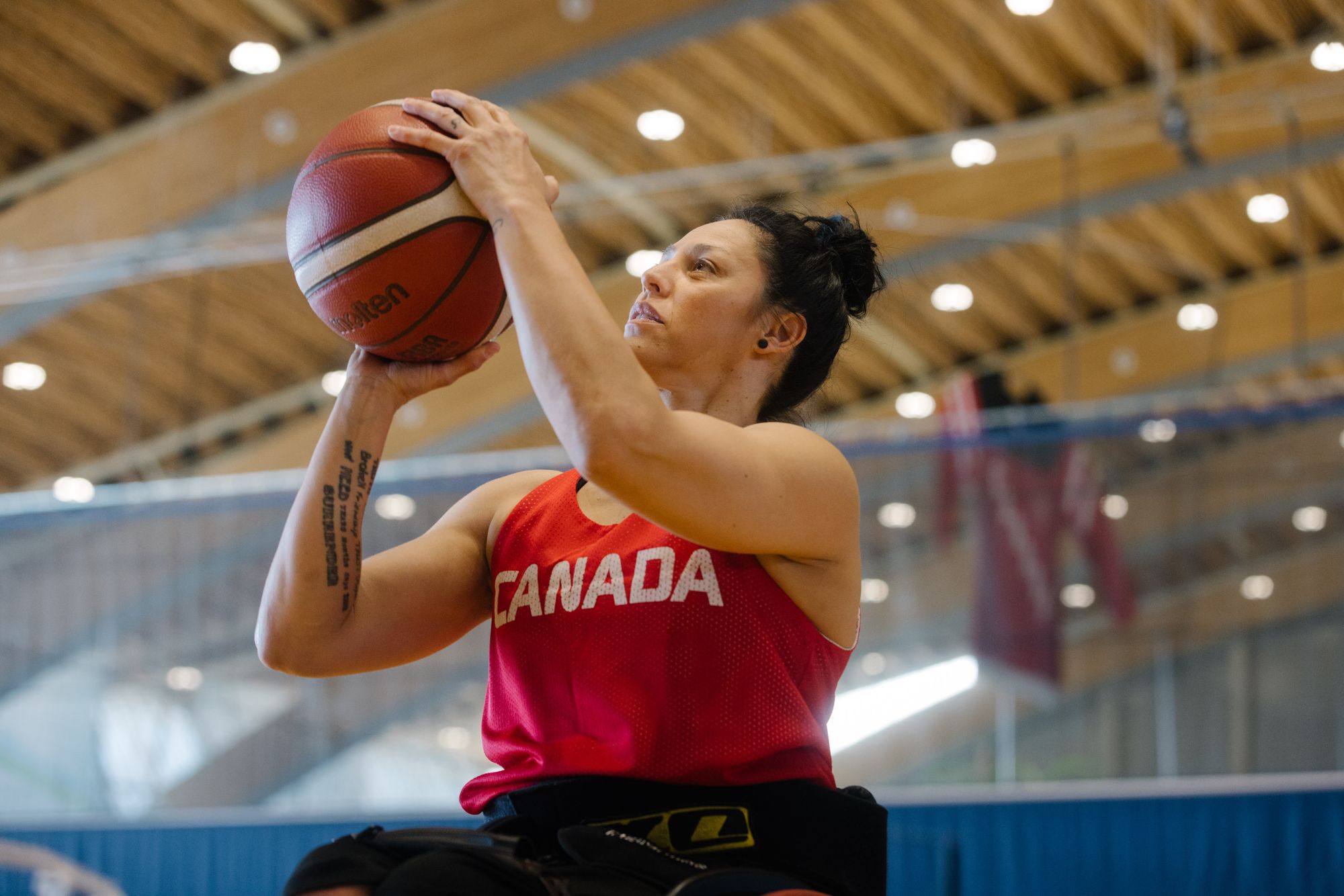
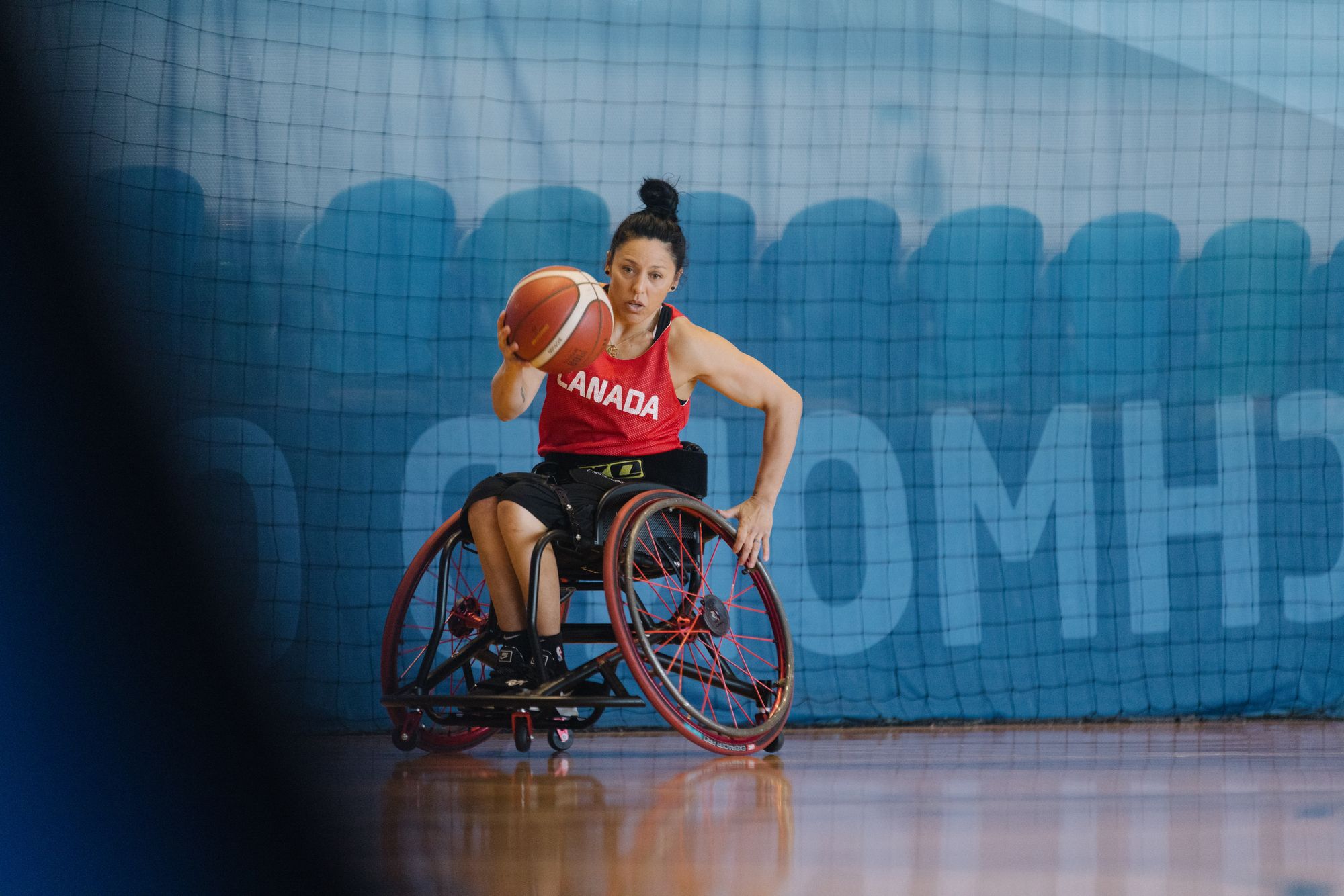
Born east of Los Angeles, Llanes is now representing Canada. [Albert Law photos]
“I had to be really careful because when I got into high school, basketball was my number one sport, and our team ended up being the best team in the country. Coach was like, ‘You do nothing except play basketball.’ I was basically sneaking out to go to BMX nationals.”
Toward the end of high school, mountain biking started to blow up in the same way snowboarding had — a thrilling new X-Gamey sport, which meant sponsorship dollars. After high school, Llanes made the jump and put in the work to chase those dollars.
The training was no joke. She lifted three days a week, ran beach sprints, practiced bike sprints at the BMX track, and practiced downhill runs, enlisting her mom to shuttle her to the top of a local mountain in her little Toyota pickup and meet her at the bottom.
gateway
“There were loads of outside sponsors that were putting tons of money into the sport. There were quite a few BMXers making the switch. We all knew how to ride a bike, and then it was like, wow, you could really, really make a living at racing your bike.”
And she did. She turned pro in 1996 and in 1999 won gold in the Winter X Games’ Biker X event — a hella hairy free-for-all with six racers screaming head to head down a snowy track packed with jumps and berms. Llanes podiumed three other times at the X Games and won conventional races, too, including a World Cup dual event and national titles in dual slalom and downhill.
Injuries were part of the package.
“A broken collarbone is like a gimme in mountain biking,” she says. She broke her left collarbone three times, suffered concussions, and in a “pretty bad” race in Durango, Colorado, partially collapsed her lungs and tore a meniscus.
It wasn’t until she was 30-ish that she started to think about injury.
“I would get in the start gate and I’d be thinking more about, don’t crash, don’t break your neck, instead of getting in the gate and wanting to absolutely obliterate the course. That was kind of the first sign for me that I probably needed to retire.”
With her mountain biking career slowing down and BMX racing set to debut in the 2008 Beijing Olympics, she flirted with a BMX comeback. She started training in 2005 and participated in a Team USA qualifying event the next year.
The top 16 women would make the team, and the field was loaded with talent and experience in racing the BMX tracks of the day. When Llanes last competed, back in 1995, tracks had a starting hill and were relatively flat with jumps that racers would approach from a straightaway. By 2006, tracks had … evolved.
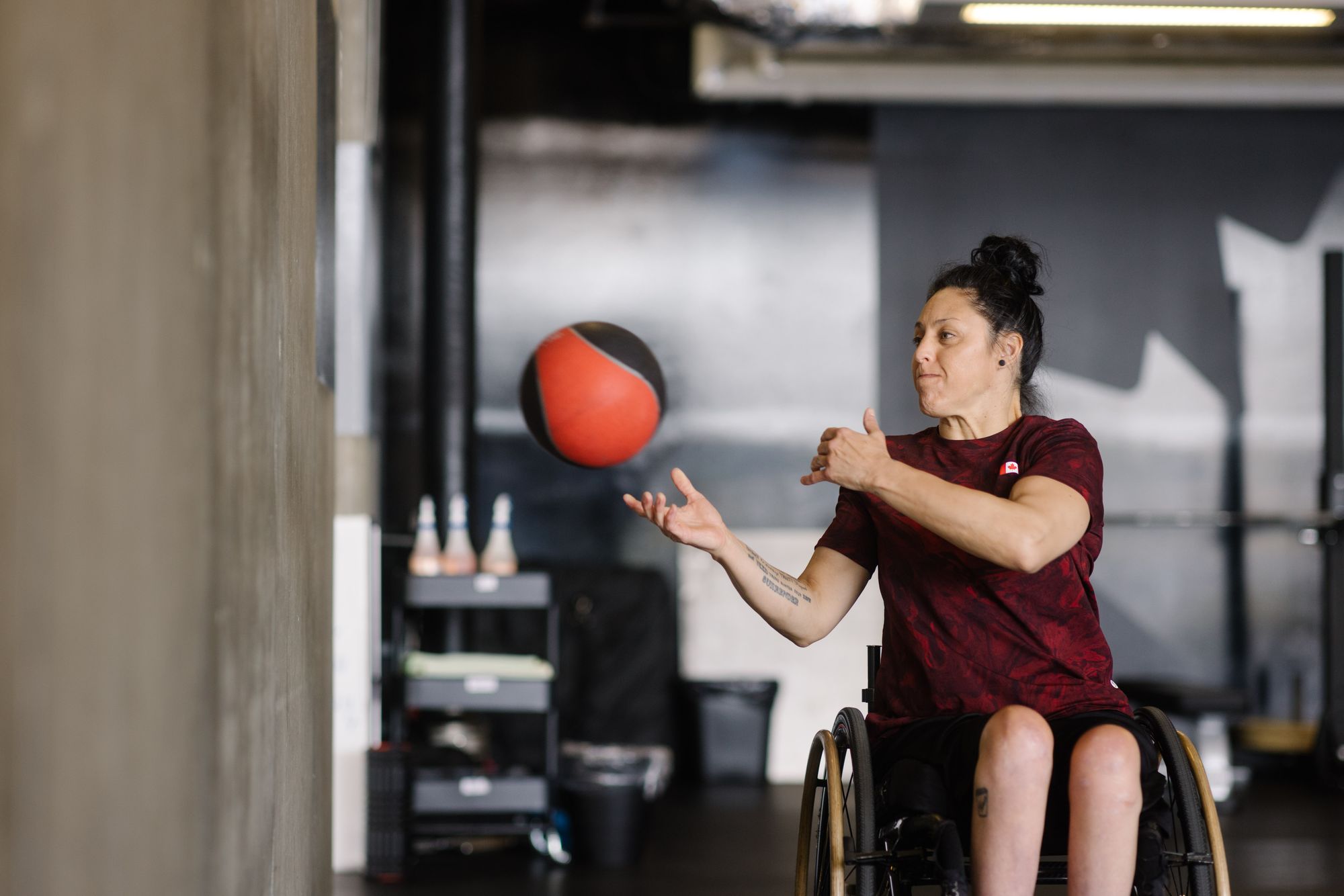
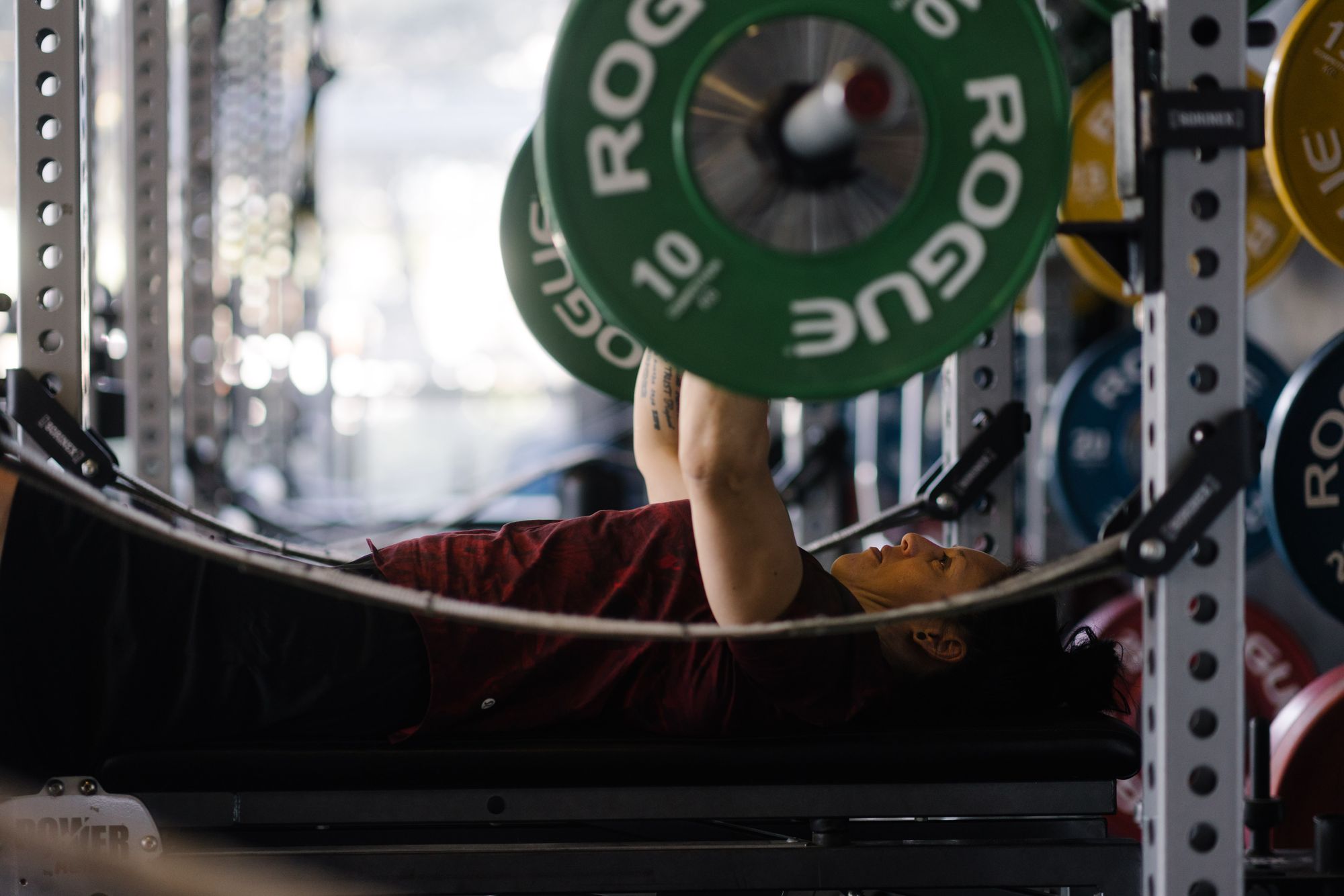
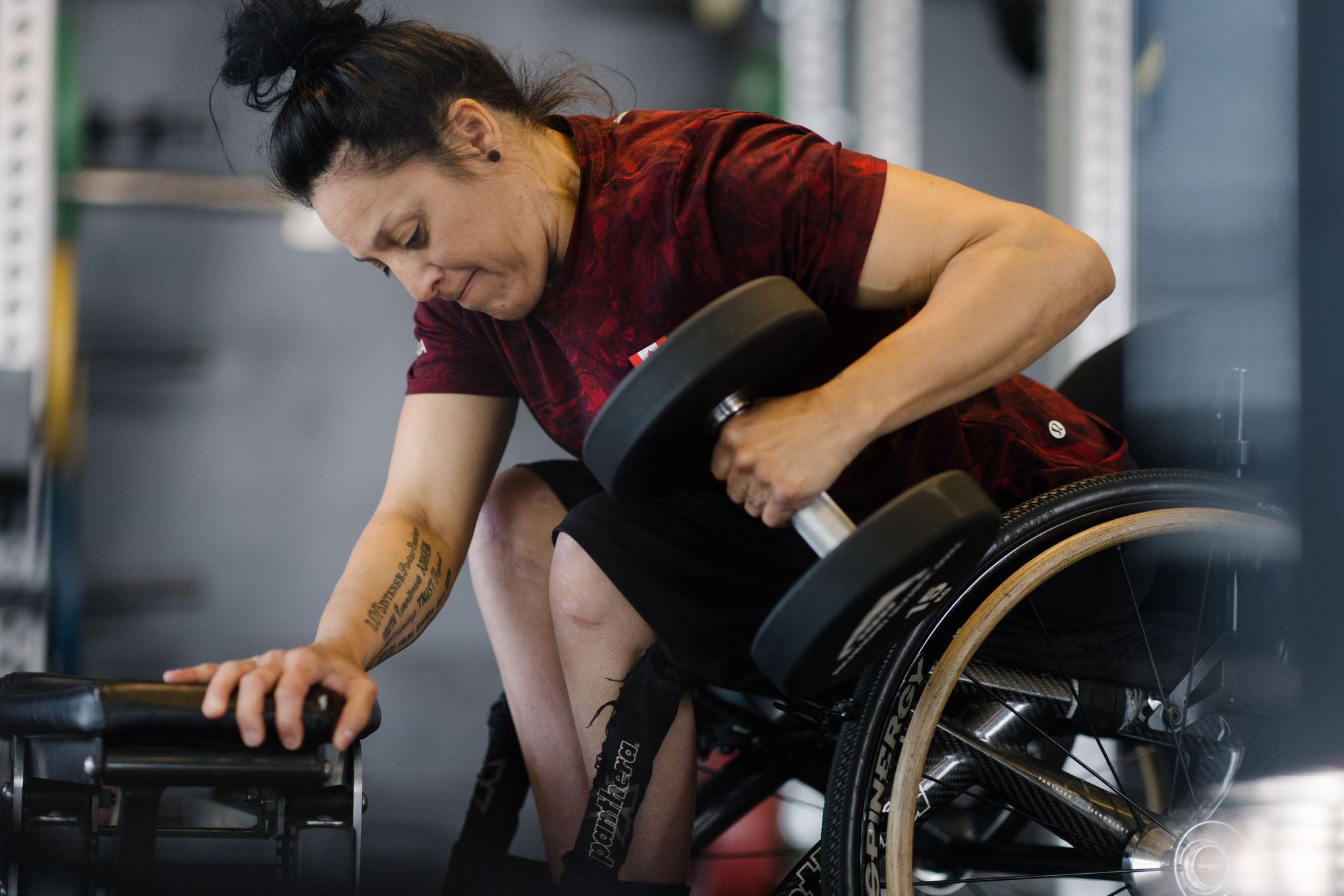
Llanes has always been known for being all-in. At 46, she needs to have that extra edge. [Albert Law photos]
“You were up on this massive start gateway up high and would come out straight downhill, and the jumps were huge. I was scared. And I wasn’t in BMX shape. The bikes are so different. With mountain bikes, the wheels and frame give you more room for error. With BMX, the wheels are 20 inches, and it’s stiff, so you feel every little thing.”
She didn’t finish in the top 16, so that was that.
She continued to race mountain bikes, but with a nod to the sun starting to set on her career, she decided to stop racing downhill — the steepest, fastest discipline — and stick with dual slalom instead. Dual slalom isn’t quite as fast as downhill, but it does have massive jumps that seem every bit as breathtaking as those dreams where you’re falling falling falling.
On Sept. 1, 2007, things felt off in the starting gate at the Jeep King of the Mountain Finale in Beaver Creek, Colorado. Llanes was up against one of her main rivals, Jill Kintner, who Llanes notes was and is still “an unbelievable racer.”
“It was the weirdest frickin thing. I remember being in the gate and nothing felt right. My goggles were sitting funny in my helmet, and my pedal — where I normally start it — it felt like I couldn’t get it in the right spot. I’d never been in the gate and had kind of a premonition, you would say.
“We came out of the gate, and I was all over the place. I probably looked like I started racing bikes the day before. I couldn’t find rhythm. Jill was way ahead of me, and I was coming up to this one section, and I was debating in my head whether I should jump the jump.
“I didn’t want to give up, because if she crashes, then I can still potentially win. But I’m having this debate in my head. Jump it or don’t jump it. I need to make a decision. I made the decision to jump it, which was the wrong decision.”
Picture the terrain. There’s a series of humps known as a roller, followed by a lip that leads to a jump. As Llanes describes it, the lip is there so racers can lift their front wheel and push on the back side to gain more speed for the jump.
She assumes that when she went to lift her front wheel, it tagged the roller and catapulted her into the face of the jump.
“I drilled my head into the front part of the jump, and then because I was clipped into my pedals, my body didn’t have anywhere to go except over my head like a scorpion. My feet were probably in front of my eyes.”
The ambulance arrived within seconds. She knew it was bad.
“They’re asking me questions, and I’m like, ‘Can someone get that log out from under my back?’ And the look on their faces … they didn’t even have to say anything. I’m like, ‘Oh, shit.’ It felt like my upper body was on a sidewalk and my lower half was slinked down a curb, like a cartoon.
“They were trying to be really positive, obviously, but by the look on their faces, I knew I was totally f---ed.”
They gave her a “slew of drugs,” and from there, consciousness pulsed like a slow-mo strobe light.
Ambulance ride.
Hospital.
X-ray machine.
Helicopter.
Hospital.
Mom. Girlfriend. Wait, they’re supposed to be in California.
The initial impact broke the lower part of Llanes’s neck at C-7, and the force of her scorpion broke her lower back at T-12. At a Denver hospital, doctors were optimistic her neck would heal, and it did.
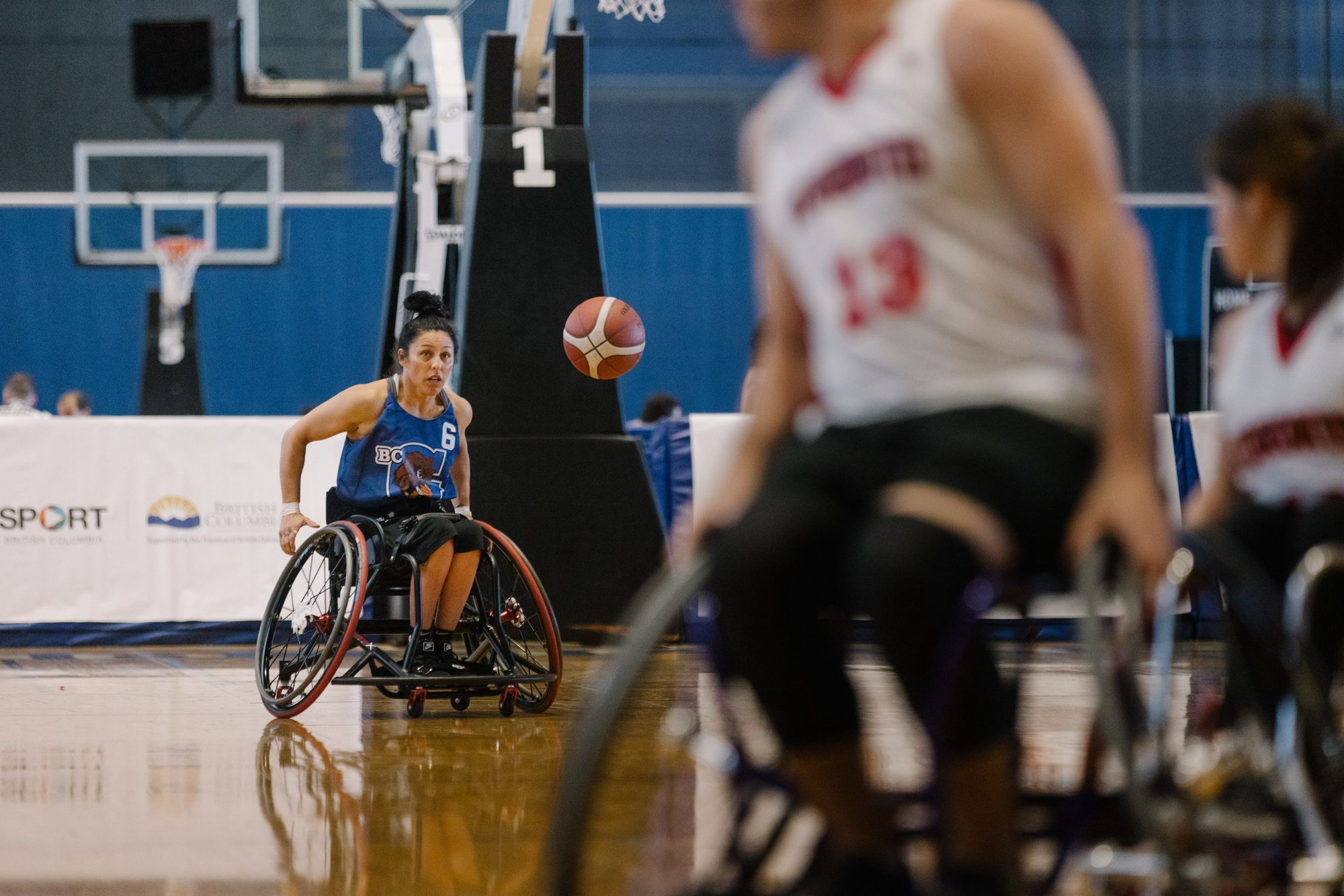
Her back was another story — surgeons put rods in to stabilize her. A week or so later, the doctor came in and told her she’d never walk again. Llanes didn’t appreciate how bluntly and cavalierly he’d robbed her of hope.
“He’d come in every day, and I was full of piss and vinegar. ‘You don’t know who you’re talking about!’ I knew nothing about the spine, but I thought if I work hard enough, I’m for sure going to walk again.”
She was a competitor after all, and hard work had always delivered the goods. The doctor recognized the sheer will fueling all that piss and vinegar, along with the likelihood that Llanes would want and need as much mobility as possible once she got out of the hospital. He proposed swapping out the rods for shorter ones. She still wouldn’t be able to walk, but she’d have a little more range in her trunk.
Llanes agreed to the shorter rods.
Two weeks later, she transferred to Craig Hospital, a top hospital for spinal cord injuries located in suburban Denver. She stayed for three months, alongside other young athletes with fresh spinal cord injuries. A skier, a bull rider, Llanes — each waking up every day and working to prepare themselves for a whole new life without the keystone of their very identity.
“They try to prepare you for the real world and what that’s going to look like, but man. Until you go home and you are in a house by yourself with nothing but your thoughts and a slew of prescription meds that you never would have taken otherwise, it can be a very slippery slope and a dark time.”
It did get dark.
She lived in California for a couple of years after the accident and took up hand-cycling, mostly to appease and comfort loved ones who thought it might be a natural sport to help avert gaping voids in competition and, perhaps, purpose. Llanes wanted them to see that she was OK and strong. And, competitor that she is, she went to nationals in 2009 and won, which she acknowledges was “pretty rad.”
But she hated it, and she was not OK.
At the end of 2009, she moved to Vancouver, British Columbia, Canada, where her girlfriend was from. And for the first time in her life, she did not compete.
Her prescription opioid use kicked up as days and months passed. She was on the slippery slope. Some days, she took so many meds during the day while her then-wife was at work, she doesn’t know how she stayed in her chair.
“I can’t imagine what it was like for her. She’d have to work and leave me during the day and I was in a really dark place, where I was like, ‘Do I care if I wake up? No. No I don’t.'
“That stuff is the devil. If you ever have a surgery, do not take it. Just suck it up. At that point I wanted something to numb the pain, I didn’t want to feel anything. But you take a little bit, and then you get used to it and take a little more, and you don’t even realize how you got to taking 12 a day.”
She knows now that she took the drugs not just for the nerve pain but also the devastating loss and emotional trauma, “the mental anguish of feeling like the world was moving right by me every day, every second. And I was like, I don’t know what I am without sports. I don’t even know who I am.”
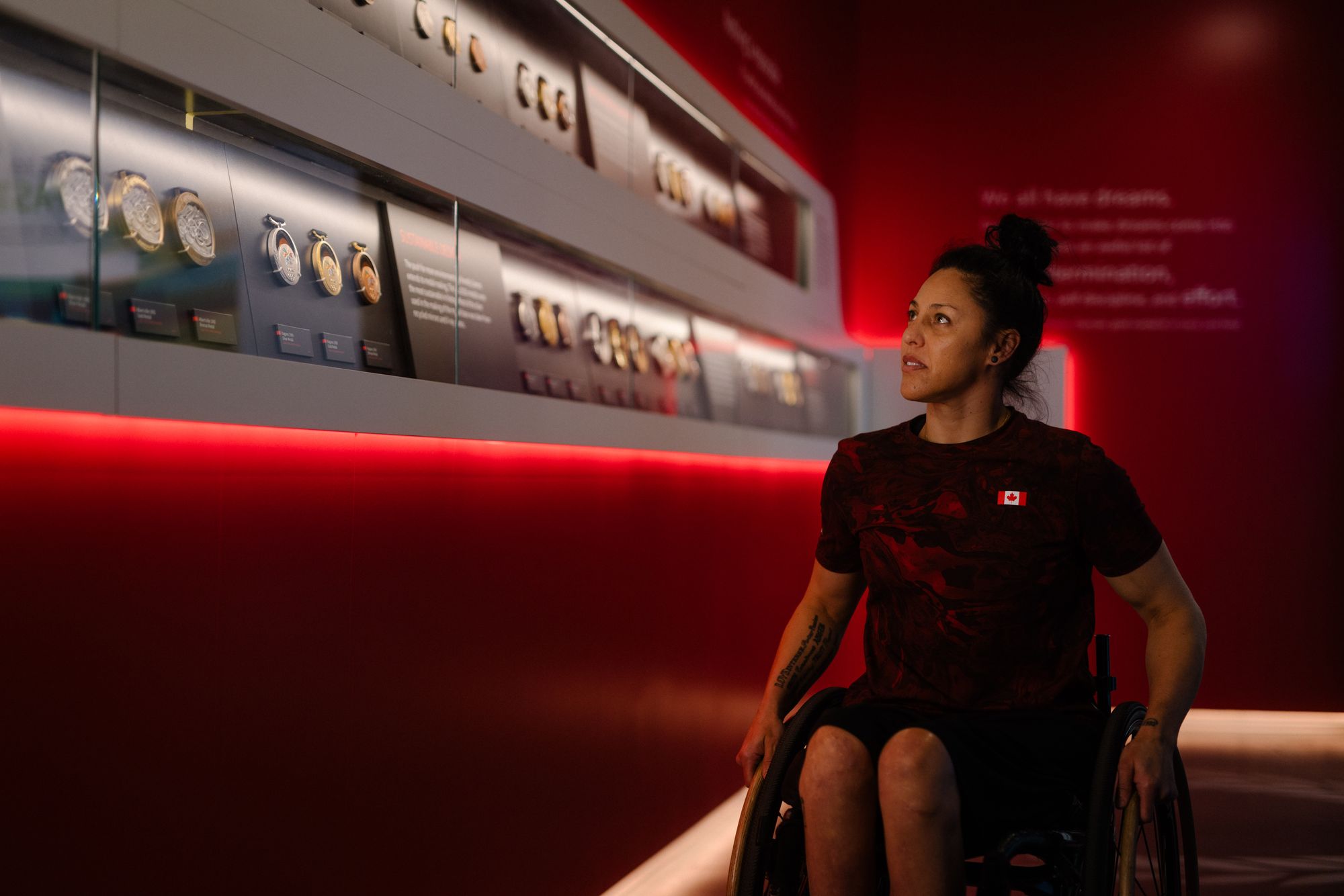
But she knew the drugs were bad news, and she tried to cut back. One night in 2010, she thought she’d try substituting a heating pad on her lower back instead of taking pain meds. The heating pad with a timer was on a closet shelf out of her reach, so, instead of waking up her wife, she went with the one she could reach — an old one with no timer. She fell asleep.
When she woke up four hours later and her wife turned the light on, Llanes’s lower back was covered in third-degree burns, all the way down to her sitz bones. Her wife was not a queasy person, but she had to leave the room and put her head between her knees before she could take Llanes to the emergency room. Once again, Llanes knew she was “f---ed.”
“At the hospital, they were like, ‘We can’t do anything because you are literally still cooking.’ They put silver on the burns (to help prevent infection), sent me home, and said to come back in 24 hours because I will have stopped cooking.”
She spent a month in the burn unit and ultimately needed seven skin graft surgeries. But there was a bright side: a pain management doctor who asked her to write down her medications before going into that first surgery.
“This guy changed my life. He looks at them and shakes his head and goes, ‘I don’t know how you’re here. I have you here for at least a month, and we’re going to try these other meds and get you off of oxy, methadone and all this other shit you’re on.’ The burn did that.”
It was a good start.
Over the next few years, she reduced her medication use, but the personal inertia remained. No sports, no competition, no spark.
Then in 2013, a breakthrough. Llanes’s then-wife was walking their dog and saw an indoor tennis facility. She walked in, asked if wheelchair tennis lessons were available, and found herself serendipitously next to the national team’s wheelchair tennis coach. She bought Llanes lessons as a birthday gift.
“I went and I freaking loved it,” Llanes says. “It was so hard, the hardest sport I’ve ever done, but I started going all the time.”
“It was so hard, the hardest sport I’ve ever done, but I started going all the time.”
Tennis lit her back up. She wanted to train and compete. She started to feel like she had purpose again. Plus she was able to push herself to the courts — now she had agency for the first time since the accident. She started lifting again, hitting balls five days a week, and playing for a provincial team.
“I was all in. It escalated quickly like BMX did. I started going all the time, and that was the moment where I was like, OK, let’s not take drugs. I wanted to make the National Team, and if you’re doing that, you cannot take drugs and fall off your chair.”
In true Llanes fashion, of course she made the National Team. And in 2017, she won singles and doubles national championships.
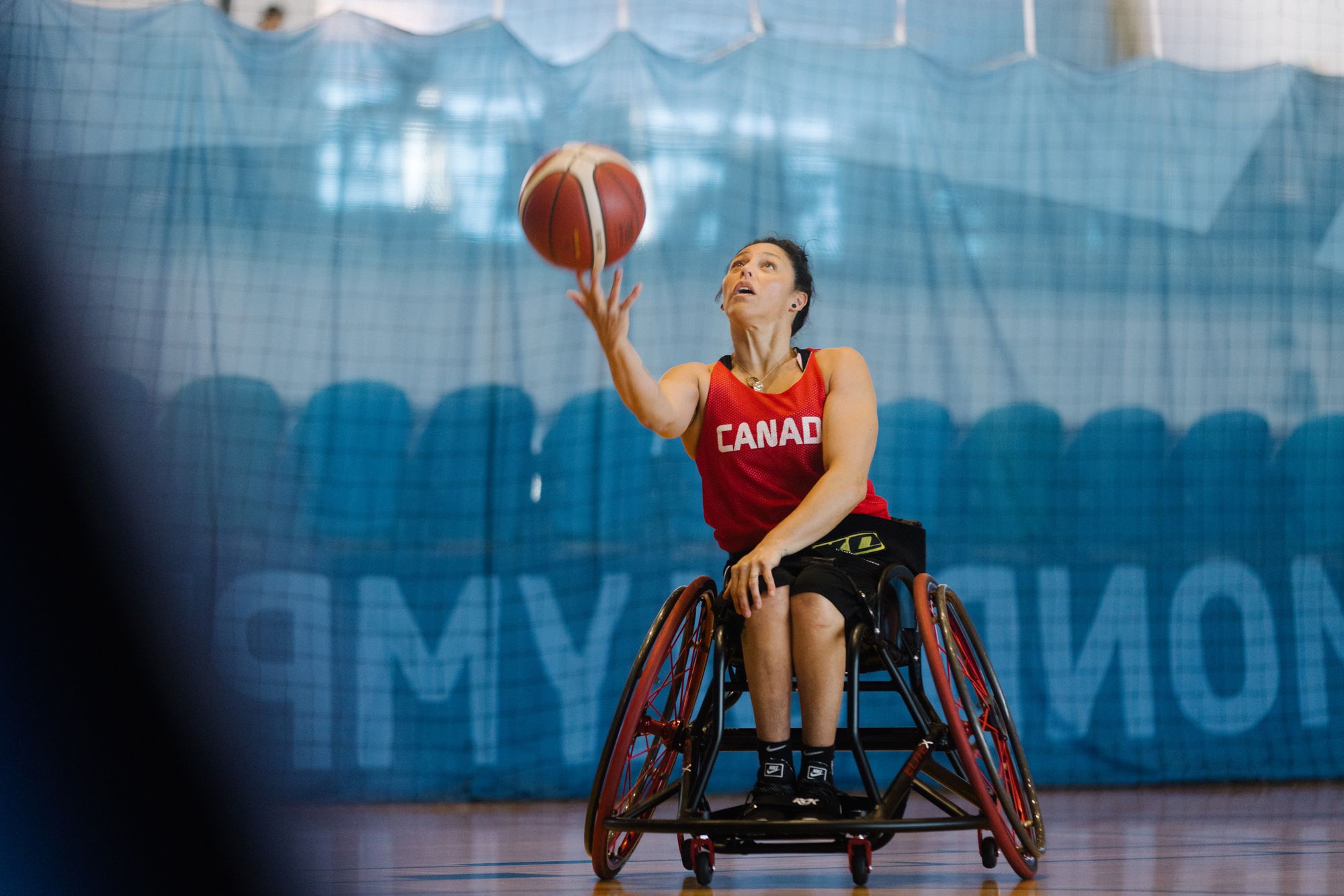
She had her sights on the Paralympics, but another seed had started to take root. At the gym one day, a player from Canada’s national wheelchair basketball team told Llanes she ought to play basketball. At first, Llanes hesitated — thought she’d compare it to her high school glory days of standup ball. But then a former national team tennis player told her that basketball could help her get faster on the tennis court.
“I started going to some practices and was like, man, I do miss being part of a team.”
Her basketball path mirrored her tennis path: learn the game, play provincially, train like crazy. In 2018, she quit tennis and trained heavily with Joe Higgins, a National Team coach who was inducted into Canada’s Wheelchair Basketball Hall of Fame just this month.
Llanes figured if she could learn the game fast enough and do well at National Team tryouts, maybe basketball could be her ticket to the 2020 Paralympic Games in Tokyo.
“There was so much to know, so much wheelchair basketball IQ and classifications and your role on the team. I always felt like I was in the wrong place at the wrong time at first. But I think the coach saw potential, and he knew how seriously I took tryouts.”
She made the team and is classified as 1.5 on a scale of 1.0 to 4.5 — the lower the class, the more limited an athlete’s physical function. Athletes who are in classes 1.0 to 2.0 don’t have control of their sitting base and need to have their upper body supported in order to dribble, pass or shoot. A 4.5 athlete can move their trunk in all directions without support.
For all the work and achievement of being a Paralympian, the COVID-delayed Games delivered not even a whisper of the thrill and energy athletes dream of.
They couldn’t explore outside of the Athletes’ Village or hang out with other teams. There were no friends, no family, no faces even, unless athletes were in the cafeteria, where plexiglass barriers meant they could take off their masks. Team Canada finished fifth.
Llanes is in a good place. Still in North Vancouver, she has found love again, runs her own business selling adaptive bikes, and was just named Wheelchair Basketball Canada’s Female Athlete of the Year.
Her teammates voted her co-captain, a role Dandeneau says was a sure thing: “She’s a great teammate, a great person, an extremely hard worker. She’s such a funny person and so kind. You couldn’t have a better person in your corner.
“But one of the things I admire so much about Tara is that she knows exactly who she is, and she is always that person, no matter who she’s around or what situation she’s in. She’s just so genuinely her. I’m like, ‘Teach me your ways.’”
There’ll be plenty of opportunities for that, with a week-long national team training camp at the U.S. Olympic & Paralympic Training Center in Colorado Springs, followed by a team regroup in the U.K. in preparation for June’s International Wheelchair Basketball Federation World Championships in Dubai (originally scheduled for Nov. 16–27, 2022).
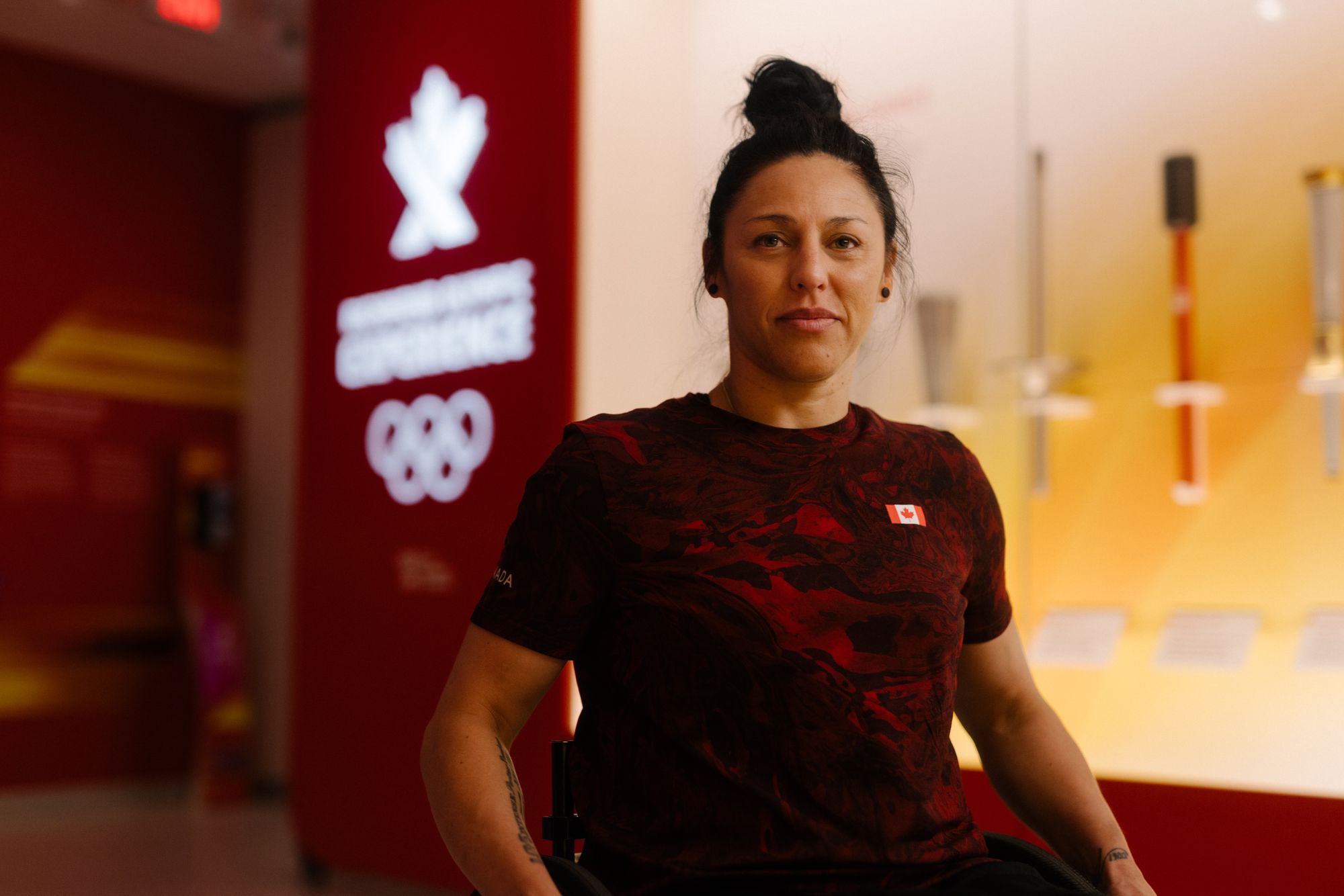
And then of course, perhaps another shot at the Paralympics, this time in Paris next summer.
Llanes acknowledges that at age 46, she’s no “spring chicken,” but she’s adjusted her training to support longevity. Instead of full-bore on-court training every day, she trains four days a week, lifts three days a week and watches game film.
“I bring average age of the team up by a mile, but it’s something I know I can still do. I’ve always said that I’m not going to continue playing if I can’t be an asset to the team. I want to contribute in many different ways, and I’ve had long conversations with the coaching staff and my teammates about that.”
It’s about more than competition, anyway.
"My entire sports career was all about winning, otherwise what’s the point. But that’s so not what it’s about. It’s really not. It’s about being the best version of yourself, and if sports can be this vehicle to help you learn those things, then great.”
That kind of wisdom only comes with accepting life’s gauntlet. And that is what she’s most proud of, more than the podiums, the honors, the championships in literally every sport she’s played.
“I’m just really proud of my journey through it. We’ve won gold medals and we’ve had some really good results and done some really amazing things on the court, but I’m most proud of the friendships I’ve made and, I don’t know, still being alive. Like, making it through all that shit and feeling like I am finally, at the age I am, thriving.”